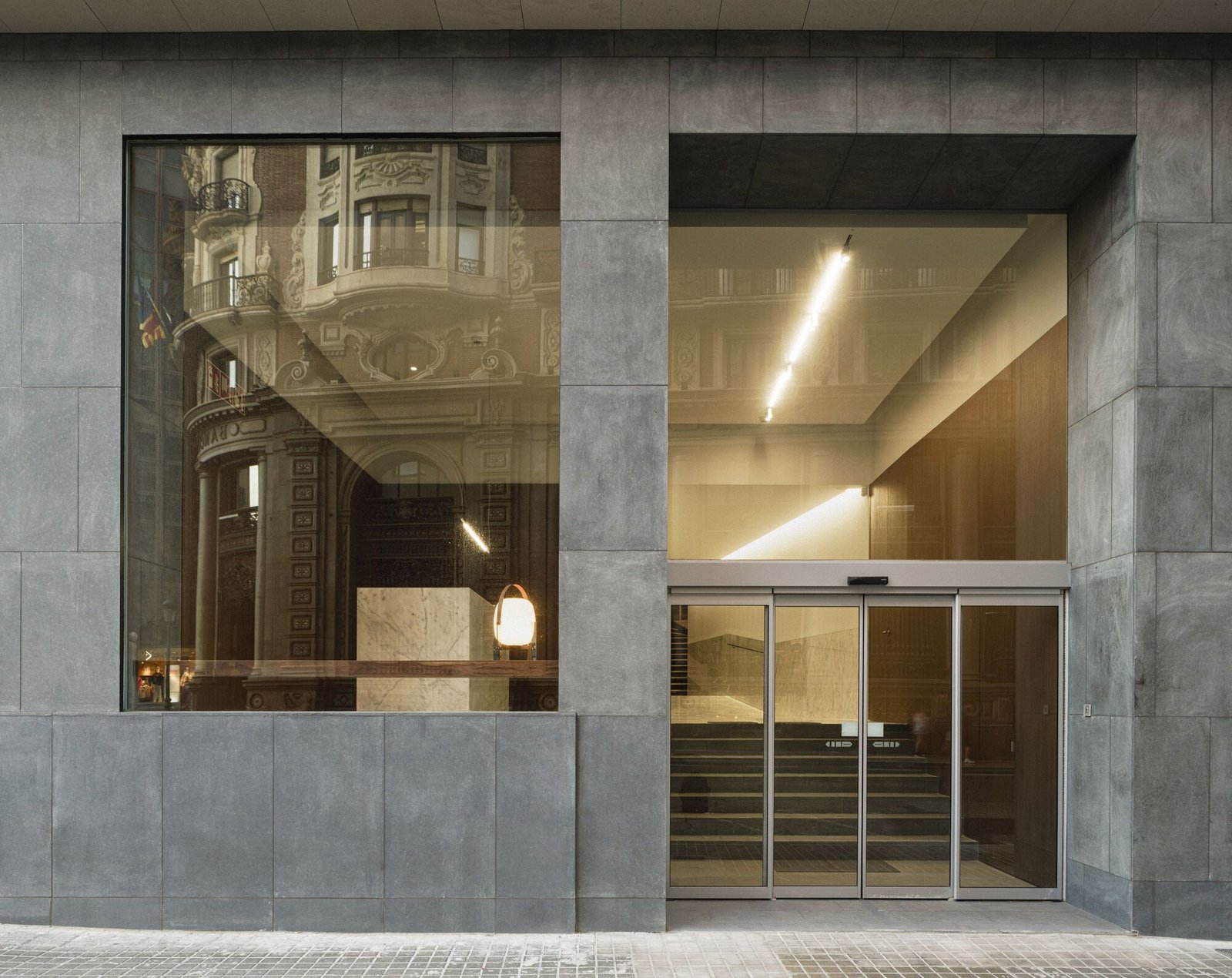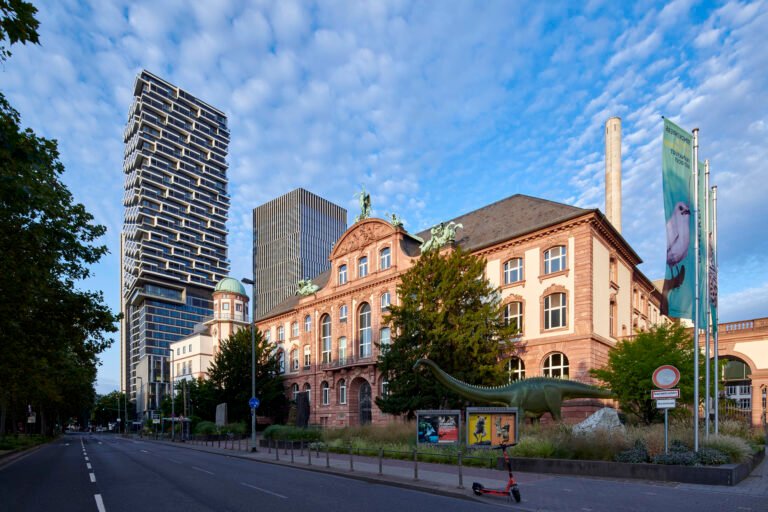Refurbishment of BBVA Financial institution Headquarters / Miriam Castells
Refurbishment of BBVA Bank Headquarters / Miriam Castells

- Area:
110330 ft²
Year:
2021
Photographs: David Zarzoso
Manufacturers: Mobles 114, Oluce, Santa & Cole, Simón, Arlex, Catalonia Ceramic, Com-led, Grupo Cubor, Mármoles Ferosa, Pauferro, Porcelanosa

Text description provided by the architects. Miriam Castells Studio has designed this recent refurbishment of the BBVA Bank’s regional headquarters in Valencia. This is an emblematic building in a central area of the city, built in 1965, which has required a comprehensive reform of the facade, reception desk, and interior floors.


The intervention has been carried out with the utmost respect for the original elements of the building. On the outside, the premise of quality provided by the original materials has been maintained. Inside, we can find a game of contrasts in textures, colors, and materials and a careful selection of furniture.


The 12-storey, 10,250 m² building was built in 1965. The bank occupies 7 of the 12 floors, the rest is office space to let.

The façade required a comprehensive but thoughtful refurbishment, not only because of the aging state of its materials but also because of the complete renovation of all its carpentries. The leitmotiv of the project is based on thorough respect of the original design essence. Concrete, limestone, and two types of granite made up the façade of the bank. In the refurbishment the materiality of the original façade is maintained: concrete, limestone, and only one type of granite shape the building.



On the ground floor, we proceed to eliminate all the jambs of the old carpentry and opaque façade breastplates, providing great transparency to all the spaces on the ground floor, allowing the interaction of the interiors with pedestrians. This permeability respects the original aesthetics of the building while matching the current functional program.


The original state of the entrance shows a disorderly arrangement of the space, very shadowy that houses at its end a white and black autochthonous marble staircase. With this as starting point, the rest of the materials, according to use and location, will be intrinsic to the development of the project. Walnut wood is included, which together with the white Ibiza and the black Marquina marbles, constitute a good ally to enhance the 60s decade and revitalize the building’s essence.

The Ibiza marble corridor and indirect lighting lead to the entrance hall. The staircase is restored, and the railing is modified. It is made on site and is topped with a walnut wood handrail. The elevator accesses are covered in the same black Marble as they were original.

The bathrooms are made of porcelain, faucets in stainless steel, and walnut dividers. These last are bathed by indirect light in the mirror and with downlights.

Accesses to the offices are covered in walnut and illuminated by led rail systems. The building’s top floor recovers office space previously unused, providing it with a diaphanous layout, facilities in plain sight, projected with a non-flammable coating material, and outdoor terraces with unobstructed views of the whole city.







